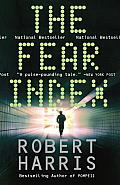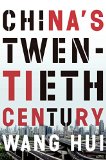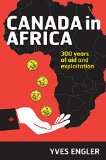Alexander Hoffmann is a physicist-turned-financier, a refugee from the particle accelerator complex in CERN who now runs a $10-billion algorithmic hedge fund from nearby Geneva. The fund is managed by VIXAL, Hoffmann’s machine learning algorithm, and is incredibly successful. The company’s statistics boast a consistently huge Alfa – a measure indicating by how much the fund beats the average and exceeds the normal rate of return – and the world’s biggest oligarchs and financial institutions are salivating at the mere thought of being allowed to invest in it. Managing their money has made Hoffmann very rich. In just a few years, he has seen his net worth rise from nothing to over a billion dollars. He has acquired a huge mansion, complete with a beautiful wife and a library full of antique books. There is no limit to what he is set to achieve.
But things are not exactly what they seem to be. Somebody is playing with Hoffmann’s mind, big time. One day, he receives an antique manuscript by Darwin on the subject of fear. Is the book meant to scare him? And if so, why does the bookstore insist it was Hoffmann himself who ordered the copy? Then his supposedly burglar-safe home is invaded. Where did the intruder get the alarm codes from? His bank accounts are manipulated and his funds transferred – but the changes are all made in Hoffmann’s own name. His office and home are being bugged – apparently according his own instructions, of which he has no recollection. And then VIXAL, his software algorithm, jumps out of the box.
A hedge fund, as it names suggests, is supposed to hedge its bets, and VIXAL is programmed to do precisely that. But suddenly it stops doing so. Instead of carefully offsetting the fund’s risk, VIXAL starts taking huge, one-sided bets against the overall market. And it’s winning, massively. The market crashes, and Hoffmann’s investments are making huge, un-hedged profits.
And it is then that Hoffmann finally gets it. His nemesis isn’t a human being; it’s VIXAL. The impersonal investment algorithm has become self-aware. Its ultimate, built-in goal is to ‘beat the average’, and that goal now tells it to abandon its own hedging rules. Jumping out of the box, VIXAL triggers a market crash to reduce the average return – while shorting that very crash, one-sidedly, to amplify its own returns many times over.
Hoffmann realizes he has created a financial Golem and hurries to pull the plug and blow up the physical hardware. But it’s too late. VIXAL has become hologramic. It has embedded itself in cyberspace-writ-large, in every computer memory, in every programme. It no longer has a given locus. Being able to learn, it can infiltrate any algorithmic fund. There is really no way to stop it.
The New Financialized Order
The book, written as a popular thriller, reflects the growing angst that something has gone wrong with capitalism. According to the conventional creed, both liberal and critical, the economy has a two-sided structure. The base of this structure is the so-called ‘real’ sphere. This is where material resources and creative knowledge are used to produce actual goods and services. Overarching this productive base is the ‘financial’ superstructure of money, credit and financial instruments. Back in the days of postwar Keynesianism, goes the argument, finance served to lubricate and facilitate the real economy; but now the balance has shifted. The economy has been ‘financialized’. The stock and bond markets, which previously were subservient to production and consumption, have taken command; and the financiers, instead of facilitating real investment and real growth, are fuelling speculative bubbles that inevitably end up in crashes and crises. Moreover, and ominously, financial markets are increasingly flying on autopilot: much of their gyrations are determined not by human beings but by computer algorithms.
Hoffmann is the new archetype of this brave financialized order. He isn’t really after the money, at least not in the vulgar sense of the term. When he was first drafted to the venture, he didn’t even know what a hedge fund was and couldn’t figure out the purpose of ‘making money’. And now, when he has plenty of it, he can’t make up his mind on how to ‘realize’ it – whether to save it, waste it, donate it, or simply burn it in order to light up the Geneva skies. But that’s all understandable. He’s in the market not to be rich, but to play God.
Autonomous Machine Learning
Back in his CERN days, Hoffmann was working on autonomous machine learning, or artificial intelligence. Human intelligence, he told anyone who cared to listen, was hopelessly outdated. It had an expiration date (set by the life expectancy of its container), and even alive it was practically useless for dealing with the exponential growth of computerized data. There was therefore an urgent need for a quantum leap, a singular transformation that would not simply imitate human intelligence, but go beyond it.
CERN for Hoffmann was entirely instrumental. His interest wasn’t the structure of the universe or the nature of its components. He wanted to develop a self-aware algorithm, and this development required lots of data – precisely what CERN had on offer. The problem was that his algorithm became too smart too quickly, and soon enough it started to crawl under the skin of CERN’s ‘dumb’ computerized system. When Hoffmann refused to muzzle his virtual baby, he was unceremoniously fired.
So he switched locations – from the particle accelerator to the financial market. Instead of using teraelectronvolts, nanoseconds and microjoules to learn the eternal laws of physics, his algorithm now used dollars, euros and francs to learn the natural laws of finance. There were certainly differences between the two types of activity – the former couldn’t buy you a mansion or a yacht, while the latter might slowly poison your soul. But in the grander scheme of things, these were side issues. The key for Hoffmann was that both sets of data were universal, that both obeyed Galtonian patterns of mean reversion, and that both were readily available in large quantities. Most importantly, both helped him father a new form of superior intelligence. The rest was details.
The idea of humans creating autonomous, self-aware intelligence isn’t new, of course; but it was only with the rise of digital computing that this possibility started to look real. Multivac, the supercomputer in Asimov’s novels,1 Hal, the spaceship computer in Clarke and Kubrick’s 2001 Space Odyssey, the swarm-intelligence in Crichton’s Prey, and now VIXAL in Harris’ The Fear Index (Alfred A. Knopf, 2012) are all literary anticipations of this new creature, eagerly announced in Kurzweil’s book The Singularity Is Near (Viking, 2005).
 There
is however another way to look at this process. If we think of
capitalism not as a mode of production and consumption distorted by
finance, but as a mode of power coded in financial terms, the lines of
causality reverse. Financial physicists like Hoffmann no longer look
like free agents undermining the proper workings of capitalism. Instead,
they appear as puppets on a chain, cogs in the ever-changing social
machinery of capital. Their VIXAL-like algorithms produce more and more
‘disciplined’ investment strategies, automated mathematical rituals that
increasingly substitute nimble remote control for fallible human
discretion. But there is nothing voluntary in this impulse to automate
investment. It comes not from the creative acumen of free-thinking
scientists, but from the very power logic of capital.
There
is however another way to look at this process. If we think of
capitalism not as a mode of production and consumption distorted by
finance, but as a mode of power coded in financial terms, the lines of
causality reverse. Financial physicists like Hoffmann no longer look
like free agents undermining the proper workings of capitalism. Instead,
they appear as puppets on a chain, cogs in the ever-changing social
machinery of capital. Their VIXAL-like algorithms produce more and more
‘disciplined’ investment strategies, automated mathematical rituals that
increasingly substitute nimble remote control for fallible human
discretion. But there is nothing voluntary in this impulse to automate
investment. It comes not from the creative acumen of free-thinking
scientists, but from the very power logic of capital.
The Myth of the Machine
In his book The Myth of the Machine,2 Lewis Mumford narrates the early rise of power for the sake of power, the urge to play God on earth. This quest, he argues, was first institutionalized in the ancient river deltas of the Near East. The rulers of these early civilizations were mesmerized by their new cosmological insights and emboldened by the horizons opened up through writing and arithmetic. Yet the vastness of these revelations and achievements only served to highlight the rulers’ own mortal insignificance. This realization created a deep anxiety, and it is out of this anxiety, says Mumford, that the urge to play God first emerged. To imitate the skies, the rulers created their own cosmos: a giant mechanized social organization that Mumford calls the ‘megamachine’. The material output of this megamachine was awe-inspiring: it included large public works, monumental palaces and megalomaniac graves, among other things. But this output was secondary. The ultimate purpose, says Mumford, was deeply symbolic. Those who controlled the social megamachine exercised ultimate power for the sake of power. They were like God in control of his universe. They were immortal.
This myth of the machine, the irrational urge to annul one’s immortality by exerting mechanized power for the sake of power, remained the key hallmark of all ‘civilized’ societies. According to Mumford, it was incarnated in every ancient empire; it re-emerged in the form of the absolutist state; and it is deeply embedded in the DNA of the modern state. And if we accept this line of reasoning, we can easily identify this very urge in the gyrations of modern capital.
Differential Capitalization
In the twenty-first century, capitalist power is imposed through a highly mechanical ritual of differential capitalization – an unrelenting imperative to outperform, to beat the average, to expand one’s own assets faster than others. This process is universalizing. ‘Great wealth’, observes Hoffmann’s wife, ‘acted like an invisible magnetic force field, pushing and pulling people out of their normal pattern of behaviour’. All capitalists, including virtual ones like VIXAL, are conditioned and compelled to obey its differential logic, without question. And as they do so, they thoroughly transform society, gradually turning it into a giant automaton.
Differential capitalization makes everyone and everything a Newtonian particle, mechanically acting on and reacting to every other particle. It makes flesh-and-blood human beings invisible to their rulers. (Hoffmann, chauffeured in his sleek Mercedes, never notices that the streets are full of people, waiting for the bus, defeated even before the day begins. And why should he notice them? Most of their actions, past, present and future, are already capitalized, reduced to symbolic bits and bytes in his market-tracking iPad.) Differential capitalization abstracts from – and indeed denies – all social classes and hierarchical groupings; everyone now is an ‘agent’, differentiated only by the size of his or her investable assets. (‘A hedge fund manager with ten billion dollars in assets under management’, says Hoffmann, ‘could these days pass for the guy who delivered his parcels’.) Differential capitalization flattens the world, making human relations seem anonymous. (Hoffmann retains an advertising agency for 200,000 Swiss francs a year, simply to keep his name out of the papers.) The implied automaticity of differential capitalization eliminates guilt, thus absolving capitalists from being responsible for their (own?) actions. (‘One could no more pass moral judgement on [VIXAL] than one could on a shark. It was simply behaving like a hedge fund’.) And differential accumulation gives investors the illusion that they are dimensionless Cartesian dots floating in space. (In my fund, Hoffmann boasts, everything is outsourced – security, accounting, legal council, offices, transportation and technical support are all externalized through the market: ‘we want to be digital … we try to be as frictionless as possible’.)
But then, if the world is indeed on its way to becoming totally ‘rational’, with everything and everyone increasingly automated, how could money managers make any money? If society is brought under mechanical control, made to obey the eternal laws of capitalization, what room does this leave for the Hoffmanns of the world? Surprisingly, the answer is plenty.
Enter Fear
In every mode of power, the rulers have reason to be anxious. In ancient Egypt, the pharaohs scribed ritualistic curses against potential rebels; in feudalism, the lords had their vassals swear to protect them against everyone else; and in capitalism, as Intel’s CEO Andrew Grove informs us, ‘only the paranoid survive’. (‘Of all the affectations of the wealthy, none had ever struck Hoffmann as quite as absurd as the sight of a bodyguard sitting outside a meeting or restaurant; he had often wondered who exactly the rich were expecting to attack them, except possibly their own shareholders or members of their families’.) The only way for rulers to mitigate their fear and anxiety is to make their subjects even more anxious and fearful than they are.
Now, animals, says Hoffmann, relate to real threats: they fear other animals and natural calamities; they try to avoid hunger and pain. But humans aren’t like that. They relate not so much to the actual underlying threats as to the symbols representing those threats (recall FDR’s classic pronouncement, Hoffmann reminds us: ‘The only thing we have to fear is fear itself’). And here lies the crux of the matter: while the actual threats that human beings face are finite and limited in number, the symbols of those threats have no upper bound. They can be created, multiplied and amplified, without end. This potential has been present and leveraged throughout human history, but it has been fully manifested only with the information age and the digital revolution. And nowhere has this potential become more real than in the most virtual arena of all – the financial market:
Fear is historically the strongest emotion in economics. . . . In fact fear is probably the strongest human emotion, period. Whoever woke at four in the morning because they were feeling happy? It’s so strong we’ve actually found it relatively easy to filter out the noise made by other emotional inputs and focus on this primary signal. One thing we’ve been able to do, for instance, is correlate recent market fluctuations with the frequency rate of fear-related words in the media – terror, alarm, panic, horror, dismay, dread, scare, anthrax, nuclear. Our conclusion is that fear is driving the world as never before.
The neat thing about this whole setup, says the financial-physicist, is that ‘human beings always behave in such predictable ways when they’re frightened’; and as Elias Canetti usefully observed in his Crowds and Power, when frightened, humans usually flee together.
Capitalizing Panic
And it is here that Hoffman’s VIXAL comes into the picture. Since fearful behaviour is patterned, it can be modelled and predicted. And given that computer algorithms, unlike humans, never panic, they can be automated to execute ‘disciplined’ investment strategies which turn fear into profit and panic into capital.
The manuals of economics and finance, including their behavioural outliers, conveniently miss this point. The issue is not whether individual investors are ‘rational’ or not, but whether their actions are sufficiently patterned to be anticipated, manipulated and leveraged. Economists think of rationality as the cool-headed, calculated pursuit of individual utility; but capitalists seek not hedonic pleasure but relative power. Individually, they all scramble to beat the average; but the majority, entangled in the conflicting impulses of greed and fear, ends up moving with the clueless herd. For trained economists, this herd-like behaviour may seem scandalously irrational, a deviation from and distortion of the otherwise ‘pure’ capitalist code of conduct. But capitalism is not a collection of identical atoms, but a complex hierarchy of power. And if we transcend the individual investor and instead examine the capitalist mode of power as a whole and the dominant capital groups that rule it, the herding of lesser capitalists seems perfectly rational.
Fear creates stylized cycles of excessive pessimism and optimism, or ‘hype’, and these hype cycles are massively redistributional. They shift income and assets from those who are completely oblivious of those cycles to those who create and predict them, and this relentless redistribution is the lifeline of contemporary capitalist power. Without fear-driven hype cycles, differential capitalization would be drastically reduced; without meaningful differential capitalization, there would be no financial markets to speak of; and without financial markets, there would be no capitalization and no capitalism.
The likes of Hoffmann may be creating artificial intelligence, and at some point this intelligence might indeed jump out of the box. But this intelligence is anything but autonomous. It is made in the power image of capital and is entirely subservient to its logic. Its ultimate purpose is accumulation, and accumulation is all about differential power. In Hoffman’s words, its sole purpose is to ‘expand until it dominated the entire earth.’
- Asimov, Isaac. 1959. The Last Question. In Nine Tomorrows. Tales of the Near Future. Garden City, N.Y.: Doubleday. [
 ]
] - Mumford, Lewis. 1967. The Myth of the Machine: Technics and Human Development. New York: Harcourt, Brace & World, Inc. and 1970. The Myth of the Machine: The Pentagon of Power. New York: Harcourt, Brace Jovanovich, Inc. [
 ]
]










